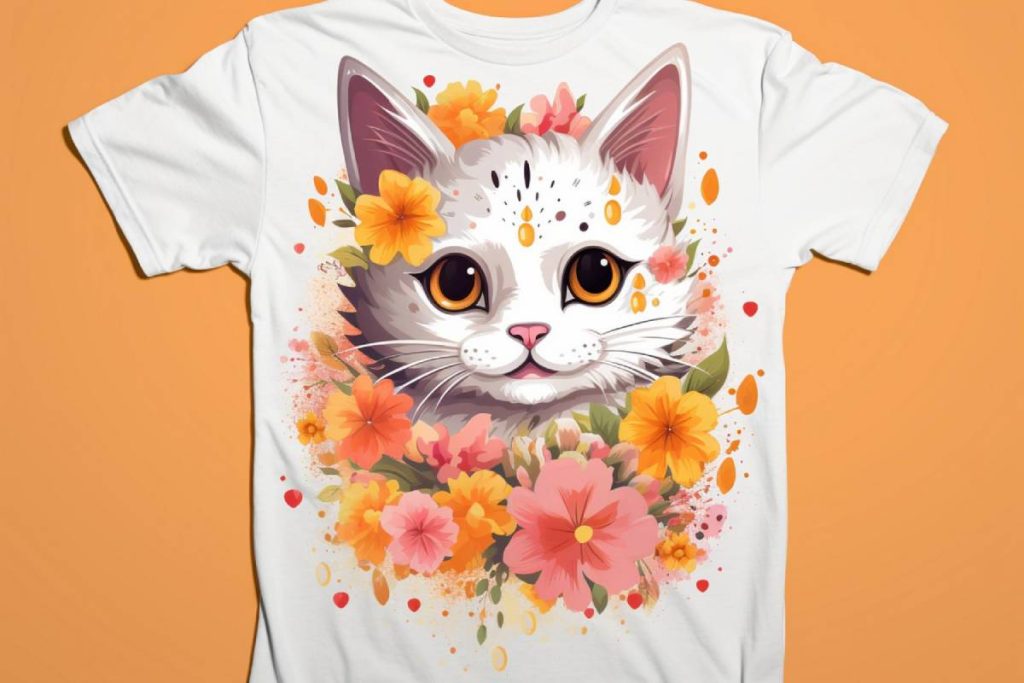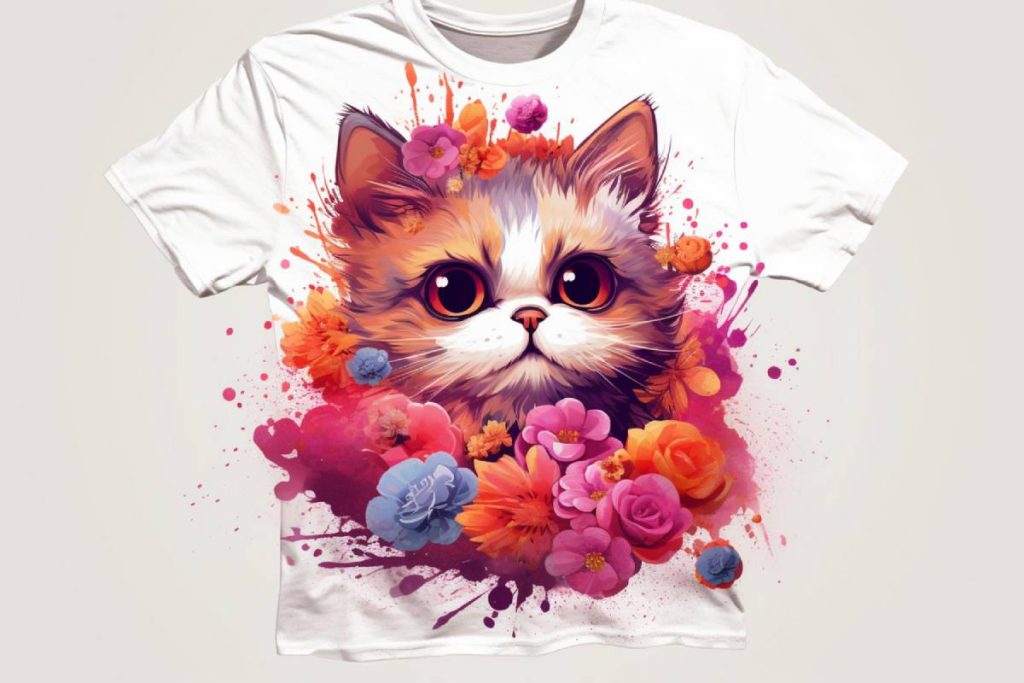Floral Heat Transfers for Stylish Prints are revolutionizing the way we approach fabric design. These vibrant and intricate designs not only add a touch of elegance to any garment but also allow for endless creativity in personalizing your clothing. Whether you’re a DIY enthusiast or a professional designer, understanding the potential of floral heat transfers can elevate your projects to new heights. In this article, we will explore the various aspects of floral heat transfers, including their benefits, application techniques, and tips for achieving stunning results.
As you delve deeper into the world of floral heat transfers, you will discover how these designs can transform ordinary fabrics into extraordinary pieces of art. We will discuss the different types of floral patterns available, from delicate blossoms to bold, tropical motifs, ensuring you find the perfect match for your style. Additionally, we will provide insights into the best materials and tools needed for successful application, making the process accessible for everyone.
Moreover, we will share expert tips on how to care for your floral prints, ensuring they remain vibrant and beautiful wash after wash. By the end of this article, you will be equipped with the knowledge and inspiration to create your own stylish prints using floral heat transfers. So, if you’re ready to unleash your creativity and make a statement with your designs, keep reading to learn more!
Understanding Floral Heat Transfers
Floral heat transfers are a popular method for applying intricate floral designs onto various fabrics. This technique involves using heat and pressure to transfer a printed design from a special paper onto the fabric. The result is a vibrant, durable print that can enhance the aesthetic appeal of clothing, accessories, and home textiles. Understanding the process and materials involved in floral heat transfers is essential for achieving high-quality results.
The key components of floral heat transfers include transfer paper, heat press machines, and the inks used for printing. Transfer paper is specially coated to allow the ink to adhere properly during the heat application process. Additionally, the choice of ink, whether it be sublimation, eco-solvent, or water-based, can significantly affect the final appearance and durability of the print. By mastering these elements, designers can create stunning floral prints that stand out.
Choosing the Right Materials for Heat Transfers
When it comes to floral heat transfers, selecting the right materials is crucial for achieving the desired outcome. The type of fabric plays a significant role in how well the transfer adheres and how vibrant the colors appear. Common fabrics used for heat transfers include cotton, polyester, and blends. Each fabric type has its own characteristics that can influence the transfer process.
In addition to fabric, the quality of the transfer paper and inks cannot be overlooked. High-quality transfer paper ensures that the design transfers smoothly without any smudging or fading. Similarly, using premium inks can enhance color vibrancy and longevity. By carefully selecting these materials, designers can ensure that their floral heat transfers not only look great but also withstand the test of time.
Designing Floral Patterns for Heat Transfers
Creating eye-catching floral designs for heat transfers requires a blend of creativity and technical skill. Designers often use graphic design software to create intricate patterns that can be easily scaled for different applications. When designing floral patterns, it’s important to consider factors such as color harmony, scale, and the overall theme of the project.
Moreover, incorporating elements like layering and texture can add depth to the designs. Designers should also keep in mind the limitations of the heat transfer process, such as the maximum detail that can be achieved. By experimenting with different styles and techniques, designers can develop unique floral patterns that resonate with their target audience.
Application Techniques for Floral Heat Transfers
Applying floral heat transfers requires precision and attention to detail. The most common method involves using a heat press machine, which provides consistent heat and pressure for optimal transfer results. It’s essential to preheat the fabric to eliminate moisture and ensure proper adhesion of the transfer.
Additionally, the temperature and time settings on the heat press should be adjusted according to the type of transfer paper and fabric being used. Following the manufacturer’s guidelines is crucial to avoid damaging the fabric or the transfer. By mastering these application techniques, users can achieve professional-quality floral prints that enhance their products.
Common Mistakes to Avoid in Floral Heat Transfers
Even experienced designers can encounter challenges when working with floral heat transfers. One common mistake is not properly preparing the fabric before application, which can lead to poor adhesion and unsatisfactory results. Another frequent issue is using incorrect temperature or pressure settings, which can cause the transfer to peel or fade prematurely.
Additionally, overlooking the importance of testing the transfer on a sample piece of fabric can result in unexpected outcomes. By being aware of these common pitfalls and taking proactive measures to avoid them, designers can ensure a smoother heat transfer process and achieve the best possible results.
Trends in Floral Heat Transfer Designs
The world of floral heat transfers is constantly evolving, with new trends emerging regularly. Currently, there is a growing demand for bold, oversized floral prints that make a statement. These designs often feature vibrant colors and intricate details that draw attention and add personality to garments.
Another trend is the use of eco-friendly materials and inks, reflecting a broader movement towards sustainability in the fashion industry. Designers are increasingly seeking ways to create beautiful floral prints while minimizing their environmental impact. By staying informed about these trends, designers can create relevant and appealing floral heat transfers that resonate with consumers.
| Aspect | Description |
|---|---|
| Definition | Floral heat transfers are decorative designs that can be applied to fabrics using heat and pressure, featuring floral patterns. |
| Materials | Common materials used for floral heat transfers include vinyl, ink, and transfer paper, which are compatible with various fabric types. |
| Application Process | The application involves printing the floral design onto transfer paper, then using a heat press to transfer the design onto the fabric. |
| Benefits | Floral heat transfers offer vibrant colors, intricate designs, and the ability to customize clothing and accessories easily. |
| Uses | These transfers are popular for t-shirts, tote bags, home decor items, and promotional products, enhancing their aesthetic appeal. |
| Durability | When applied correctly, floral heat transfers are durable and can withstand multiple washes without fading or peeling. |
| Design Considerations | Choosing the right floral design is crucial; consider color schemes, size, and placement on the fabric for the best visual impact. |
| Market Trends | Floral designs remain a popular trend in fashion, with seasonal variations and unique styles appealing to diverse consumer preferences. |



